Overview
If you’ve got the 4x4 but aren’t quite sure what you’re building for — comfort? capability? Conquest? You’re not alone. The off-road world isn’t one-size-fits-all. It’s a choose-your-own-adventure story written in mud, rock, and time zones.
Some people crave the serenity of an open desert at dawn, where the silence hums louder than any engine. Others ache for the raw tension of axle-deep rock, where one wrong move means a bent driveshaft and bragging rights for surviving it. And then there are those who just want to get a little lost for a few hours, splash some mud, climb a ridgeline, and still be home by dinner.
That’s the soul of the off-road world — three very different types of thrill, each with its own heartbeat.
Overlanding is for those chasing horizons, who love the quiet comfort of solitude and the logistics of surviving off-grid. Rock crawling is pure precision, a test of machine and nerve on terrain designed to punish hesitation. Trail riding — or casual off-roading — is your perfect middle ground: unpredictable, joyful, messy, and addictive in all the best ways.
In this guide, we’re not telling you which one is better. We’re helping you figure out which one fits you.
Table of Contents
- What Does Off roading Meaning — And How It Differs from Overland Meaning and Rock Crawling
- Which Upgrades Actually Matter for Your Adventure Style
- Final Thoughts: Multi-Style Setup That Supports Both Travel and Crawling
What Does Off-roading Mean — And How It Differs from Overland Meaning and Rock Crawling
Overlanding vs Off-roading vs Crawling: The Goals Behind Each Style
Define overland, and you’re not talking about just driving into the woods and calling it a night. You’re talking about intention.
Overlanding is a lifestyle built around exploration and self-reliance. The people who love it don’t just want to see remote places—they want to live in them, even for a while. It’s about choosing the long road on purpose. It’s sipping coffee next to your rig in the early cold, watching condensation lift off your hood as the mountains wake up. It’s slow mornings, long routes, and the peace of knowing you packed exactly what you need to go further than most people dare.
Then there’s rock crawling, which feels more like combat than travel. It’s calculated chaos. You’re aired down to single digits, hugging boulders, dancing between geometry and gravity. The vehicle is your armor. Your spotter is your lifeline. You break parts. You fix them. You keep going. It’s not about the view—it’s about the line. That moment when your tire climbs something it shouldn’t, and for a split second, your heart outruns your RPMs.
And finally, off-roading or weekend trail riding—this is where many start, and many stay. It’s playful, spontaneous, and often just plain fun. You pick a trail, pack snacks, and chase that endorphin rush that only comes from slinging mud, hitting water crossings, and pointing your rig somewhere new. There’s no pressure to camp, no need to max out articulation. It’s about reconnecting with terrain that pushes back just enough to make it interesting.
What Your Build Says About You: Overlanding for Beginners vs Rock Crawling
As Quadratec explains in their blog, many confuse weekend trail rides with true overlanding—but there’s a world of difference in purpose, preparation, and mindset. According to Tuff Stuff’s breakdown, overlanding is as much about emotional clarity as it is about vehicle readiness — something off-roading simply doesn’t aim to deliver. There’s even a new category of hybrid builders—the so-called “Rocklanders”—explored in depth by Metalcloak, who blend long-haul travel and serious technical crawling into one absurdly capable rig.
Which Upgrades Actually Matter for Your Adventure Style

Overland Rig Setup — Comfort, Reliability, and Overland Must Haves
Best Overland Gear for Comfort-First Rigs
Building a comfortable and reliable overland rig begins with load-aware suspension. Overland trucks carry far more than trail rigs — rooftop tents, drawer systems, full water containers, and dual batteries can easily add 500–800 lbs. Factory springs aren’t rated for that. Upgrading to progressive coil or leaf packs with off-road tuned shocks is non-negotiable. It reduces bottom-out on washboard roads and protects your frame over time. The goal isn’t lift—it’s support.
Comfort starts inside the cab. A jeep wrangler dead pedal might seem minor, but on multi-hour drives through unpredictable terrain, proper foot support reduces fatigue and improves throttle control. Similarly, if you’re still on stock seats, consider bolstered replacements for spinal support during bouncing and side-slope driving.
From the outside in, airflow management is essential. A well-mounted arb twin compressor ensures you can air up after sand or mud, without overheating the unit. Add a secure compressor mount for reliability. 4x4 air compressor capacity is ideal for large all-terrain tires and reduces refill time by half compared to entry-level kits.
Lastly, creature comforts matter more than people admit. A roof awning, proper lighting brackets for night camp setup, and modular storage keep life organized when you’re weeks away from home.
Overlanding Gear List That Covers Safety, Power & Convenience
Beyond ride quality, your overlanding essentials must include redundancy. Every core system should have a backup or fail-safe. For electrical, that means a dual battery tray and isolator setup. Your fridge, lights, GPS, and fan need a stable power source—and a way to isolate it from your starter battery to avoid stranding. Add solar if you’re stationary often.
Water systems follow the same logic. Rigid water tanks with inline filters and secondary backup containers give you flexibility if a hose bursts or a cap fails. A water pressure pump allows hands-free use while saving gallons over time.
Navigation should go beyond your phone. Bring both GPS and paper maps. Mount your comms system near your line of sight. Overland rigs often traverse wildfire zones or cell-dead national forest—radio can be your only link out.
Mechanically, upgrade jeep wrangler brake lines if you’re adding weight and towing. Add an best portable air compressor for off roading with tire repair tools, plugs, and pressure gauges. When in doubt, pack the gear you’d want if you were stuck two days from a paved road—because someday, you will be.

Rock Crawling Mods That Rely on Off-road Body Armor and Suspension Travel
Protection First: Off road Body Armor That Saves Your Undercarriage
Crawlers play a different game—here, impact is expected. Proper off road body armor isn’t about “might hit something”; it’s about what you’re willing to hit. Factory skid plates? Decorative. You need heavy-duty body armor that ties into the frame, especially around the transfer case, oil pan, and fuel tank.
Don’t forget bumpers. A high-clearance jeep wrangler jk front bumper with winch mounting and recovery points is essential for obstacle entry. In the rear, a robust rear bumper jeep wrangler jk or gladiator jt rear bumper helps avoid tail crunch on steep descents.
Older platforms like the YJ or CJ7 benefit from reinforcements. Add a cj7 rear bumper, jeep yj skid plate, and frame-strengthening brackets before your first boulder garden.
The difference between crawling and limping off the trail is usually a single hard hit. Protect the weak points before you even engage 4-low.
Custom Off road Suspension for Maximum Articulation and Control
In rock crawling, the suspension isn’t there to cushion—it’s there to move. Travel, articulation, and anti-bind geometry are what make lines possible.
Custom off road suspension means long-arm kits with triangulated linkages, adjustable coilover mounts, and frame reinforcements. The goal is to keep tires planted, not just moving. High-clearance shock mounts and extended sway bar disconnects allow for predictable droop without limiting rebound.
If your ride lifts a tire on small shelves, you’re underbuilt. If it rolls over from three inches of pitch, your center of gravity is too high. Fix it.
Control arms should be beefy, serviceable, and mount at corrected angles. A well-set crawler will “walk” over obstacles that unbuilt rigs slam into.
And yes, offroad compressor access matters. Crawlers air down deeply—8 to 12 PSI isn’t rare—and you’ll need quick re-inflation between trail and street. Go with a best off road air compressor that tolerates repeated use and heat buildup.

Trail Riding Upgrades for Flexibility and Weekend Off roading Essentials
Off road Suspension Parts That Improve Comfort and Control
For weekenders, versatility is everything. Your rig might see snow, sand, mud, and pavement in the same trip. That means suspension must balance comfort and travel without being overkill.
Off road suspension parts for trail use should include monotube shocks with progressive valving, 2–3” lifts with bump stop extensions, and stronger sway bar end links. Add to your toyota or jeep body armor to prevent rock rash when lines get sloppy.
You’re not trying to max flex—you’re trying to keep tires on dirt, steering predictable, and suspension from binding mid-way through an incline.
Trail-friendly gear like jeep cherokee xj front bumper, cj7 bumper, or jeep wrangler jl front bumper benefit from upgrades that don’t compromise daily drivability.
Air Compressor 4x4 Off road — A Must for All Trail Types
No trail rig is complete without a 4 wheel drive air compressors system. Even if you never crawl, you need to air down for traction and back up for asphalt. The arb compressor is compact and reliable; perfect for daily use.
Mounting matters. Avoid heat zones near exhaust. Use quick-disconnect hoses and keep gauges accurate within 1 PSI. If you ride in snow or clay, moisture traps are critical—wet compressors corrode internally.
Airing up should take under 10 minutes per tire. Any longer and you’ll stop using it. That’s when mistakes happen.
Must Haves for Off road Trucks That Won’t Let You Down
Trail rigs are exposed to constant vibration, moisture, and rapid terrain changes. Your core components need to tolerate it all. Add jeep body armor early—it saves the rest of your upgrades. Use jeep wrangler aftermarket bumpers with D-rings and winch plates. Protect with jeep skid plates or toyota skid plate equivalents. And add a jeep wrangler body lift for tire clearance and better approach angle without suspension compromise.

Final Thoughts: Multi-Style Setup That Supports Both Travel and Crawling
Must-have Gear for All Trail Types
No matter your driving style, some gear simply matters everywhere. Whether you’re crawling, overlanding, or just exploring trails, a few upgrades form the backbone of any capable rig.
Air compressor comes first. For crawlers, it lets you drop to low PSI and climb safely. For overlanders, it maintains tire health on long gravel sections. Trail riders need it for terrain changes—sand, mud, or snow. Onboard, twin-cylinder compressors with thermal protection are the standard for reliability.
Armor matters too. Even basic trails can damage low-hanging components. A well-designed skid plate system—covering the transfer case and oil pan—protects you in both rock gardens and rough backroads. It’s not about how hard the trail is; it’s about how far from help you are.
A strong front bumper with recovery points is non-negotiable. It improves your approach angle, protects your grille, and gives you a safe winch mount. Whether you’re stuck in snow or helping someone else, this is where recovery starts.
Finally, dual battery support isn’t just for campers. It protects your starting power if you’re running a fridge, lights, or air tools. Any rig that spends time off-grid—even for a weekend—benefits from clean power separation.
These upgrades aren’t about style. They’re about making sure your trip doesn’t end with a call for help.
Avoid Overbuilding: What Off-road Driving Gear Essentials Are Actually Worth It
One of the fastest ways to waste money—and ruin performance—is to build a rig for a trail you’ll never drive. It happens all the time. People buy the most aggressive gear they can find, then discover it makes their daily driving worse and their trail rides harder, not better.
Steel skid plates are a classic example. Yes, they’re bombproof—but if you’re not crawling rocks, they’re overkill. For overlanding or light trail use, aluminum plates reduce weight, resist corrosion, and won’t sag your suspension under gear load.
Oversized lifts and tires often backfire. Unless you’re rock crawling or deep into mud pits, a moderate 2–3” lift with properly matched dampers is more effective—and safer. Big tires stress axles, ruin mileage, and can make recovery gear less compatible.
Expensive lighting setups, roof racks, and accessory mounts look great… until you realize they rattle, catch wind, or block your rooftop tent. Buy only what solves a problem you already have.
And finally, don’t over-prioritize “tactical” accessories (like MOLLE panels and 12v gadgets) before you’ve driven enough to know what you actually need.
Start with what breaks, then build from there.
Overbuilding isn’t a sign of preparation—it’s a sign you skipped the trail.
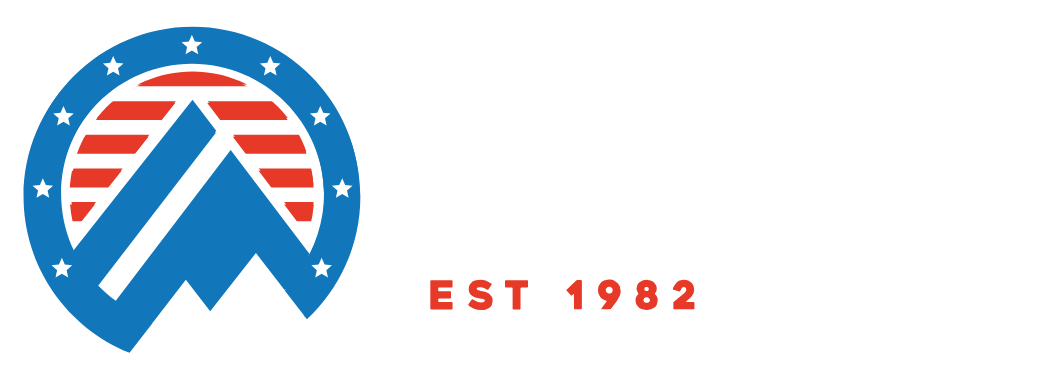
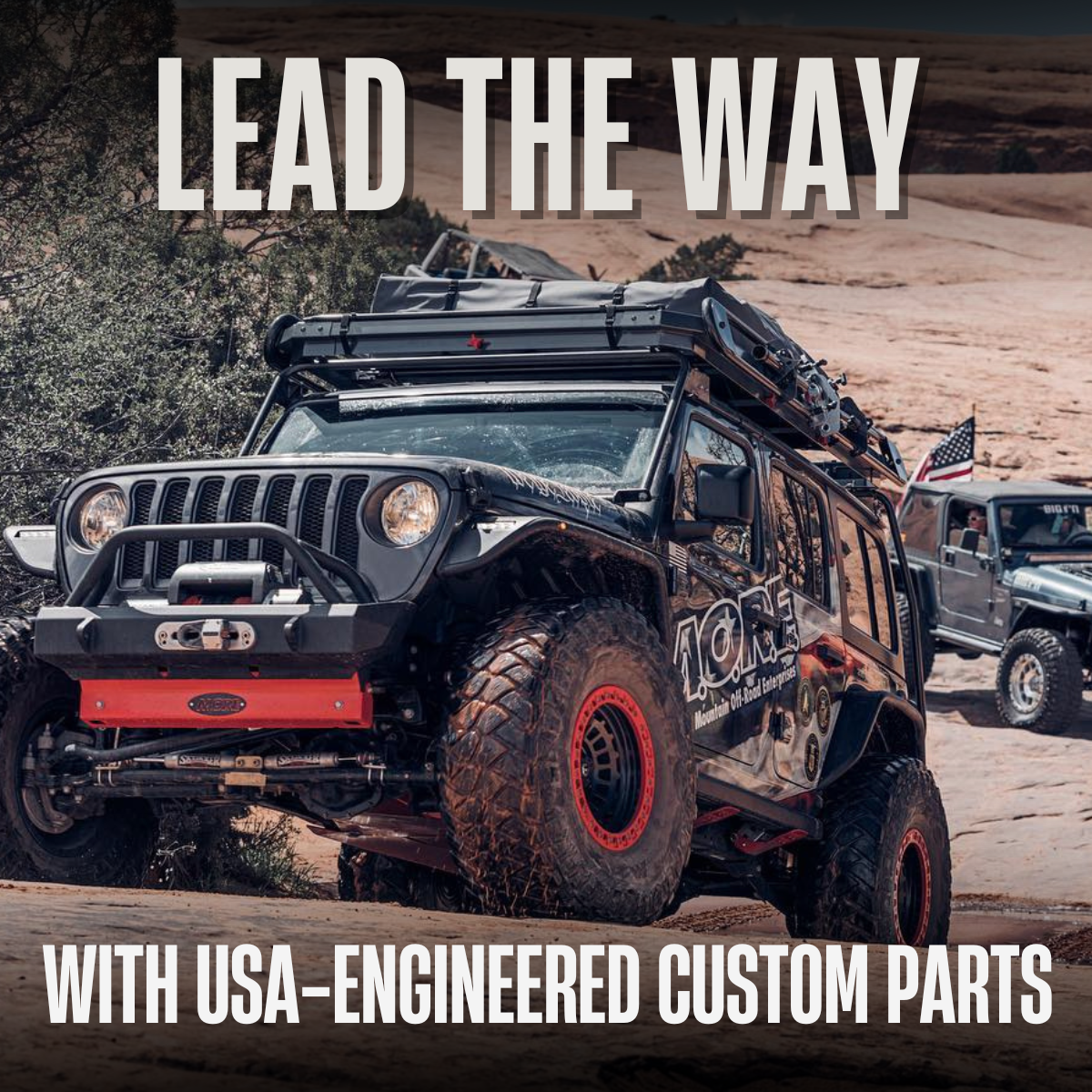
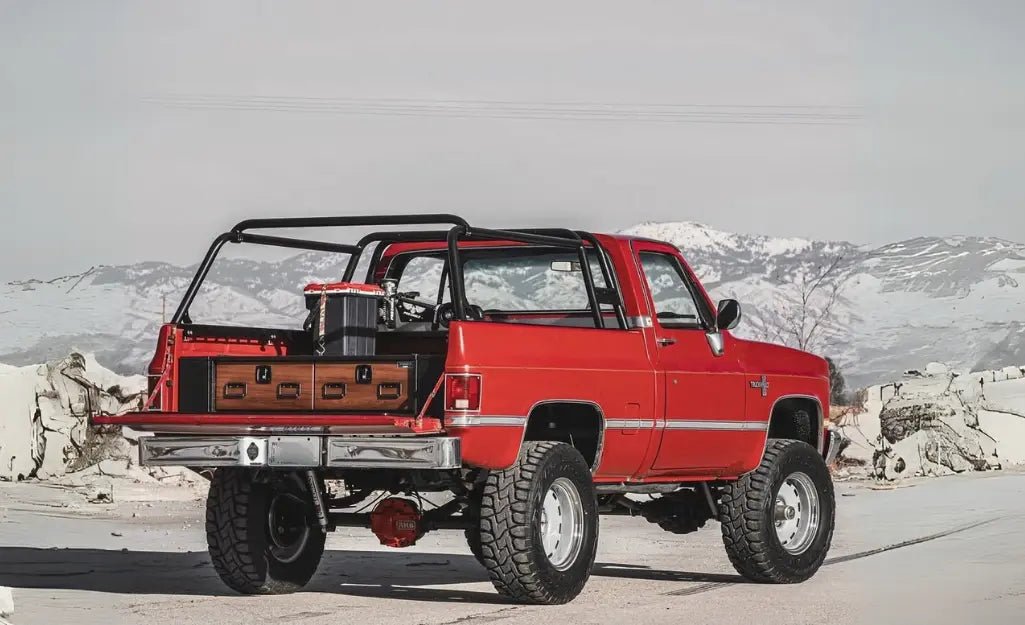
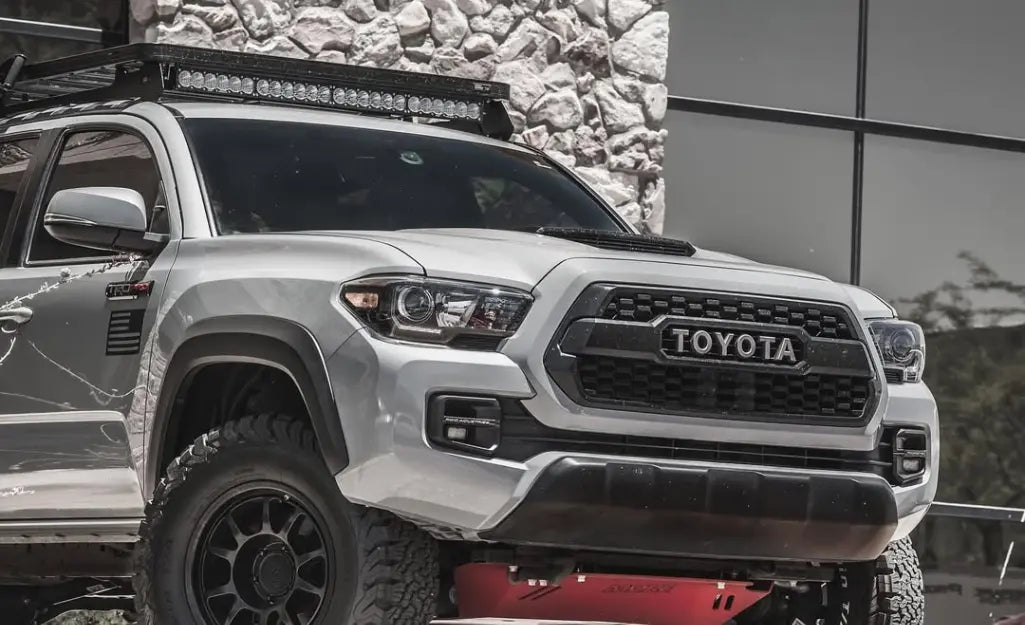
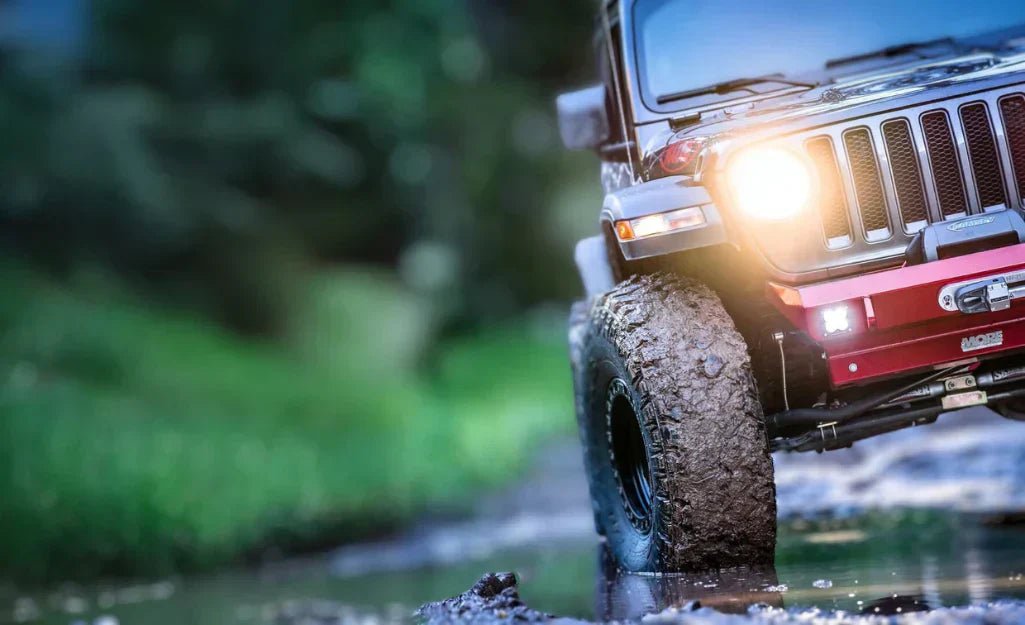
Leave a comment
This site is protected by hCaptcha and the hCaptcha Privacy Policy and Terms of Service apply.